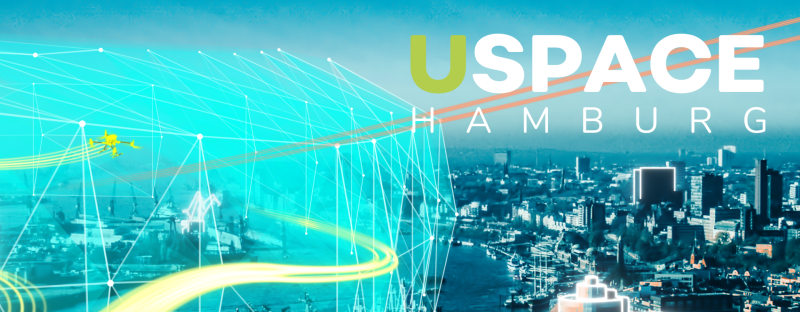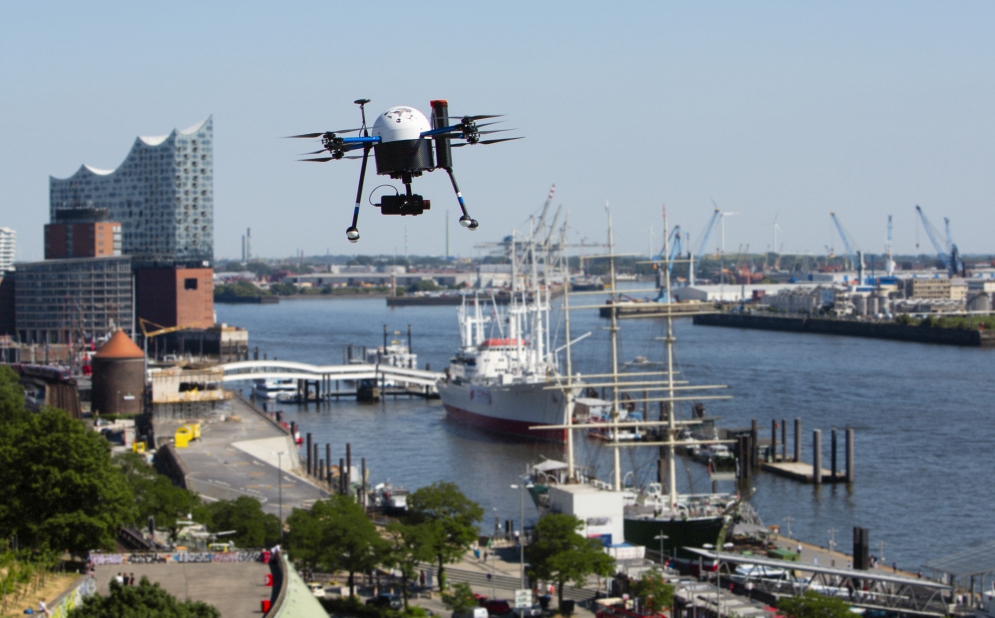In future, drones will have their own kind of traffic system. This will allow flights in areas with a high volume of drones to be carried out easily, safely and in coordination with manned air traffic. This is the idea of U-Space – a concept of the EU’s Aviation Safety Agency EASA, which EU member states are to implement by the beginning of 2023.
Droniq GmbH, a Germany company for the integration of drones into the airspace, and its parent company DFS Deutsche Flugsicherung GmbH are putting the idea into practice for the first time. To this end, the two companies are setting up a U-Space Sandbox in the Port of Hamburg. The project has a volume of approximately one million euros and is funded by the Federal Ministry of Transport and Digital Infrastructure (BMVI).
The project will create a perspective for the future. In this way, the BMVI is creating the basis for the implementation of further U-Spaces in Germany and thus promoting the further development of the local drone market.
Construction site inspections, route surveys, fabric transport: drones are increasingly being used commercially. For this, drone flights must be easy and feasible at short notice. This is a requirement that is not always feasible, especially in areas with a high volume of drones, due to the high administrative costs and sometimes lengthy flight approval processes.
The U-Space*, a spatially delimited airspace element, is intended to solve these challenges. In the U-Space, special rules and procedures coordinate drone traffic and make it possible to carry out drone flights quickly, safely and without a long approval process – even beyond the pilot’s line of sight.
“In the future, the U-Space will also allow the full potential of the drone to be used in urban areas within a given framework,” says Droniq CEO Jan-Eric Putze. “For unmanned aerial transport, this is a milestone. We are proud to show for the first time what this future can look like.”
Distribution of tasks and roles
The basis for U-Space is formed by requirements laid down by EASA. These partly determine its technical and procedural design. They also define the necessary actors and tasks for its organisation.
Drone traffic in U-Space is coordinated by a U-Space Service Provider (USSP). This is the contact person for the drone pilots. Droniq assumes this task within the framework of the real laboratory: it issues flight permits for the drone missions and informs the pilots about the current manned and unmanned air traffic as well as any airspace restrictions. For this purpose, Droniq uses the first fully operational traffic management system for drones (UTM) in Germany, which it distributes and which was developed by DFS.
The second central role is fulfilled by DFS: As Single Common Information Service Provider (SCISP), it supplies Droniq with all relevant airspace and air traffic data for the provision of U-Space services. Furthermore, with the manned aviation data, all air traffic, manned and unmanned, can be displayed in a combined air situation picture. This is an essential prerequisite for flights beyond the visual range of pilots – and thus for the efficient use of drones.
“With our drone traffic system, we are very well positioned internationally and thus already have a basis for the integration of drone airspace. In this way, we enable fast and uncomplicated drone operations. This is an important step towards digital aviation, combined with proven safety,”
explains Friedrich-Wilhelm Menge, Managing Director Technology at DFS.
Test U-Space yourself during flight weeks
In the fourth quarter, Droniq and DFS will demonstrate how a U-Space can function during flight weeks. Prior to this, the conception, development and project-internal testing of the U-Space real laboratory will take place. The implementation of the reallab is being carried out with several project partners. These include the Hamburg Port Authority AöR (HPA), HHLA Sky GmbH, the Hamburg Ministry of Economics and Innovation, Hamburg Aviation and the project consortium UDVeo.
Michael Westhagemann, Senator for Economic Affairs and Innovation of the Free and Hanseatic City of Hamburg:
“The Port of Hamburg offers the best conditions for testing a transport system for drones and evaluating the opportunities and challenges. Used wisely, drones offer enormous opportunities in the most diverse areas of business and society. With the U-Space Sandbox, I see the opportunity to test potentials of a new air transport under real conditions and to actively participate in its development. That is why I am pleased about the decision of the Federal Ministry of Transport to support the project in Hamburg.”
Federal Minister Andreas Scheuer:
“Innovative, intelligent, networked – this is what the future looks like for drones in Germany. We are now launching Germany’s first test field for a drone airspace in Hamburg and creating the conditions for the transport system of the future. In the U-Space Sandbox, we are testing in practice how drones and, in the future, air taxis can be integrated safely and intelligently into the airspace. Especially for logistics, as support for emergency services or for supplying rural areas, drones are a clean, fast and smart mobility solution. With the U-Space Sandbox, we are taking drone innovations made in Germany out of the niche and into the air.”
Top image: Fabiano Waewell / EyeEm via Getty ImagesPhoto: Jan Brandes
Source: Press Release


